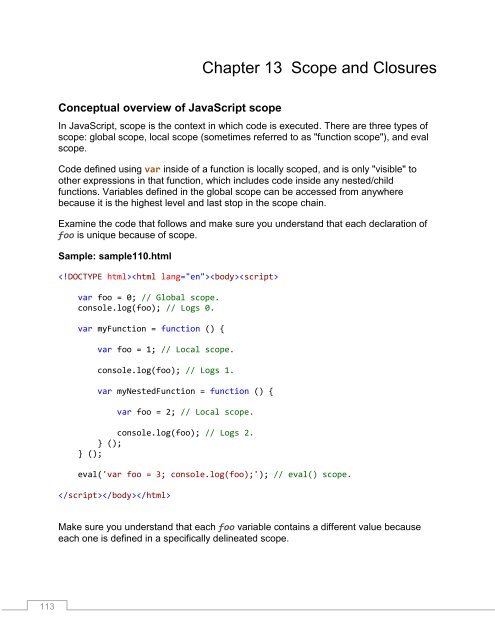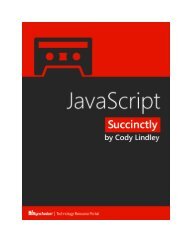JavaScript_Succinctly
Create successful ePaper yourself
Turn your PDF publications into a flip-book with our unique Google optimized e-Paper software.
Chapter 13 Scope and Closures<br />
Conceptual overview of <strong>JavaScript</strong> scope<br />
In <strong>JavaScript</strong>, scope is the context in which code is executed. There are three types of<br />
scope: global scope, local scope (sometimes referred to as "function scope"), and eval<br />
scope.<br />
Code defined using var inside of a function is locally scoped, and is only "visible" to<br />
other expressions in that function, which includes code inside any nested/child<br />
functions. Variables defined in the global scope can be accessed from anywhere<br />
because it is the highest level and last stop in the scope chain.<br />
Examine the code that follows and make sure you understand that each declaration of<br />
foo is unique because of scope.<br />
Sample: sample110.html<br />
<br />
var foo = 0; // Global scope.<br />
console.log(foo); // Logs 0.<br />
var myFunction = function () {<br />
var foo = 1; // Local scope.<br />
console.log(foo); // Logs 1.<br />
var myNestedFunction = function () {<br />
var foo = 2; // Local scope.<br />
console.log(foo); // Logs 2.<br />
} ();<br />
} ();<br />
eval('var foo = 3; console.log(foo);'); // eval() scope.<br />
<br />
Make sure you understand that each foo variable contains a different value because<br />
each one is defined in a specifically delineated scope.<br />
113



